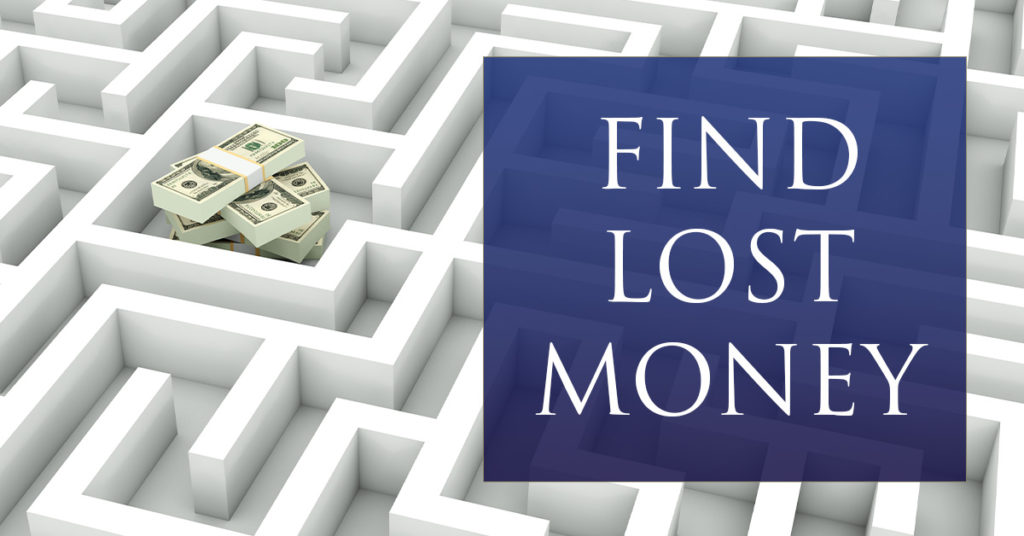How’d you like to score your share of $1.35 trillion? That’s how much money was in the combined 24 million 401(k) accounts left behind at previous employers, as of May of 2021.
You see, data from the U.S. Bureau of Labor Statistics shows that individuals who were born during the later years of the Boom generation, specifically between 1957 and 1964, typically worked at an average of 12.4 different jobs between the ages of 18 and 54. What’s more, workers have recently been quitting their jobs en mass, in a movement that’s been dubbed “The Great Resignation.”
So, a lot of people have left behind 401(k) accounts with money in them. If you do, it would be advantageous to track that money down. The average balance in a forgotten account is around $55,400. Over a lifetime, failure to reclaim these assets could potentially cost you as much as $700,000 in retirement savings.
So this begs the question: how do you recover that money?
How to Find Your Old Plan
Granted, finding your old accounts may be challenging for a number of reasons. For example, hundreds of thousands of U.S. businesses closed permanently during the first year of the pandemic. Additionally, you may have moved or changed your email address, making it so your previous employer can’t find you. Rest assured, a qualified financial advisor can help you.
First, what you should do is make a list that includes every employer where you contributed to a 401(k). Next, call each one to make sure they haven’t folded and still have an account in your name. And, if needed, update your contact information.
As we mentioned, company closings, mergers, or 401(k) servicer changes can make an old account harder to trace. If your attempts to contact your previous employer or the plan administrator were unsuccessful, search for the plan information on the U.S. Department of Labor website. This site may be able to help you in regards to plans dating back to 2010.
You can also search for your money, which may be considered unclaimed property, on sites like unclaimed.org or missingmoney.com.
What To Do Once You’ve Located Your Old Account
Once you’ve located your old plans, work with your advisor to roll the funds over directly to a specified 401(k) or IRA account. Make sure your money is sent to the receiving financial institution, and does not land in your account first. Failure to do this could result in a mandatory 20% tax withholding on the funds distributed.
The next key step is ensuring that all of your accounts are consolidated. It’s difficult to devise a cohesive strategy when they are held in several locations. It’s important to keep it simple when it comes to account management.
One last tip: To keep things as simple as possible, and make the most of your retirement savings, put consolidating your accounts at the “top of the list” whenever you leave a job. You don’t want to put off doing this, and end up having to take the time to track down all your old accounts. So, consolidate as you go.
Other Forgotten Funds + Where to Find Them
The money in a 401(k) isn’t the only asset that could be lost or forgotten. Insurance accounts, unpaid wages, pensions from former employers, tax refunds, savings bonds, and many other accounts where money is stored could go underlooked by accident.
The National Association of Unclaimed Property Administrators (NAUPA) reports that about 1 in 10 Americans have unclaimed property, and that a combined $3 billion is returned to owners each year.
Brokerage firms and other financial institutions must report unclaimed or abandoned accounts, once they have made diligent efforts to locate the owner. Should they be unsuccessful, they must report it to the state agency that handles the matters. The agency then claims it through a process known as “escheatment” so that the owners can find it.
Websites you can use to locate lost funds include your own state’s unclaimed property site, NAUPA’s missingmoney.com, the U.S. Department of Labor database for back wages, or the Pension Benefit Guaranty Corp, to claim your pension funds.
One final note: Claiming your assets is free, or at least should be. Be wary of anyone who wants to charge you for doing so.


